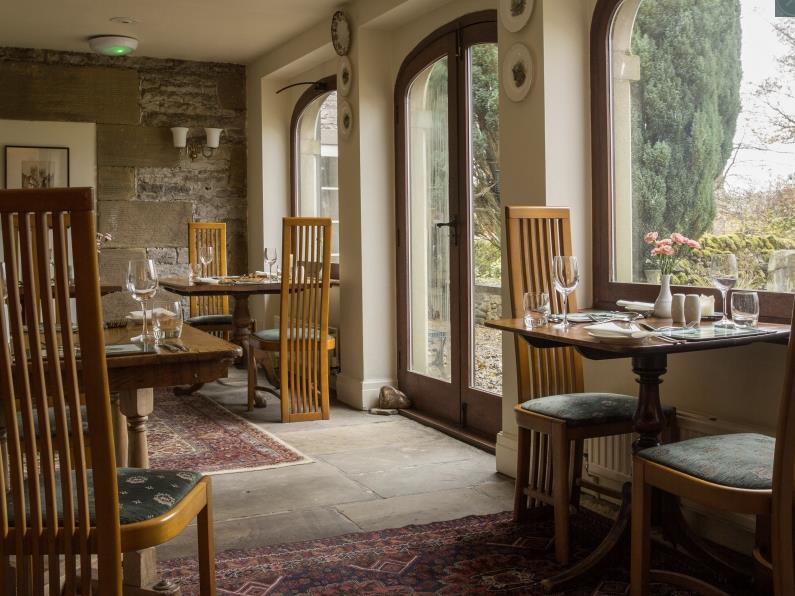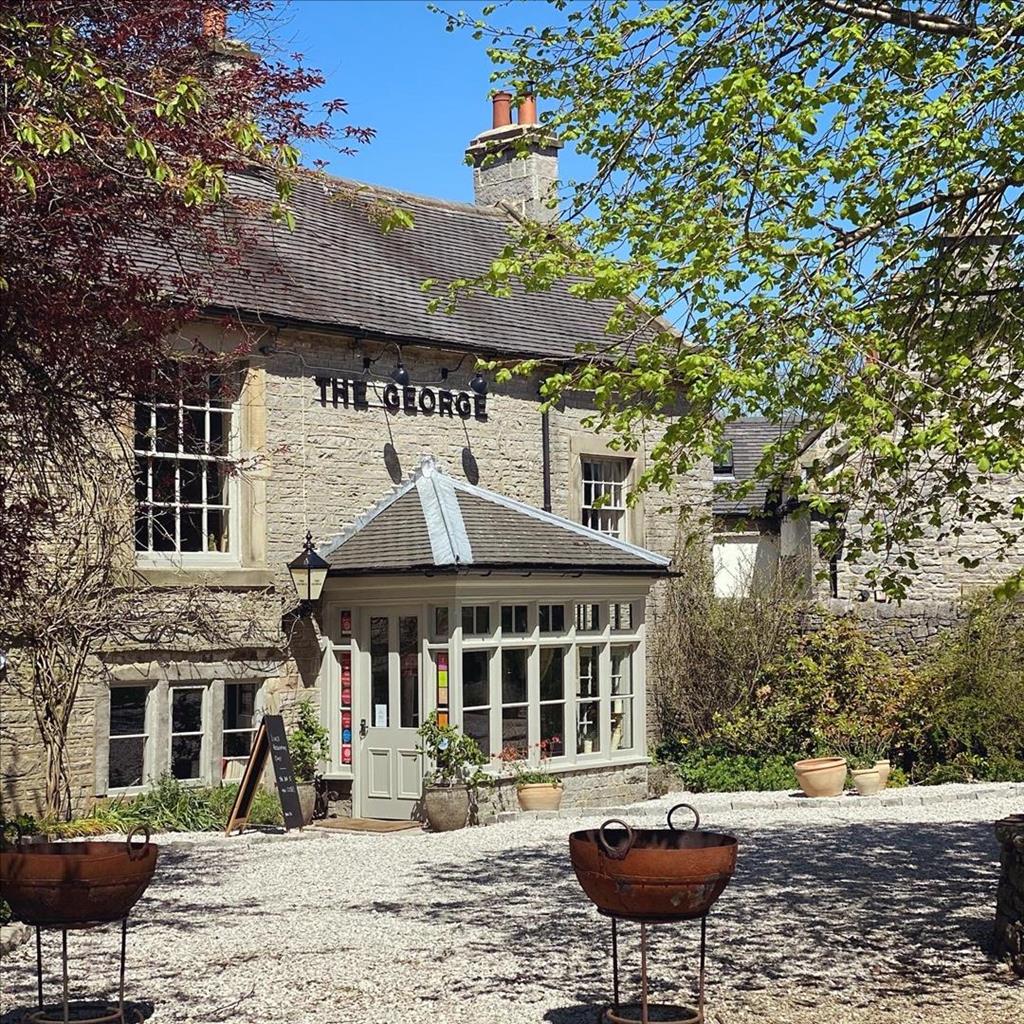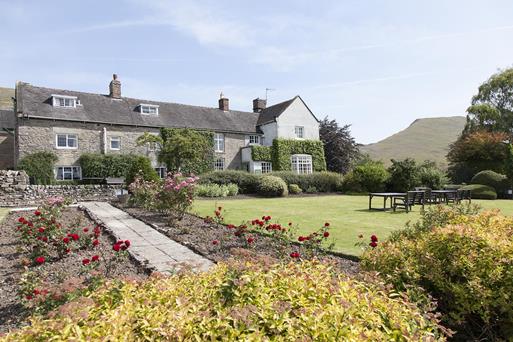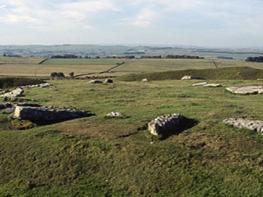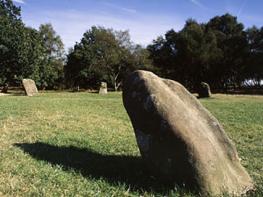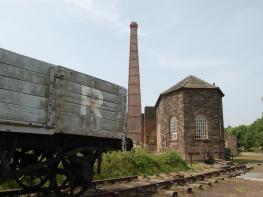A detached Grade II-listed house in the rural village of Aldwark, Ivy Cottage is in the heart of…
The Roystone Grange Trail

3.75 miles (6kms)
About the walk
Every hill and valley has a story to tell. At first glance Roystone Grange looks nothing out of the ordinary – just a typical White Peak valley in the Peak District National Park. There is a rather strange-looking group of trees on a hill to the east, but not much else of note. However, archaeologists from Sheffield University carried out diggings over several years and unearthed evidence of the existence of Roman farms and prehistoric camps, and a medieval grange run by Cistercian monks. The National Park Authority subsequently developed and waymarked the Roystone Grange Trail, which takes you back 6,000 years into history.
Industrial History
To start with the history is a little more recent, as you follow the trackbed of the old Cromford and High Peak Railway. It crosses two huge stone embankments and goes through a cutting where cowslips and orchids grow, as well as an old stone quarry with a rusting crane tucked in the shade of the rockface. Further on is a complex of Victorian brick kilns. High-firing silica sands found near here were made into bricks for use as liners for the steel furnaces of Sheffield.
Mysterious Minninglow
Overlooking the route is Minninglow Hill, topped by a crown of gaunt beech trees that hides an ancient barrow called Minning Low. This was excavated in 1851 revealing a very large megalithic chamber and several imperfect cists (stone coffins). One of these, however, was intact and with its capstone in place. As you descend to Roystone Grange itself there’s a Bronze Age barrow on a nearby hilltop. Mysteriously, several skulls were excavated here without the rest of their skeletons. The dig also revealed two Roman dress pins.
Working on the Grange
The original Roystone Grange farm, then known as Revestones, was sited a little to the south of the present buildings. In the 14th century Adam of Herthill gave the farm to the Cistercian abbey of Garendon in Leicestershire. Monks and local ‘lay brothers’ would have worked the sheep farm and sold most of the wool abroad, but hard times would follow after bad winters and the plague and it was no doubt a hard life. North of the present day farm, on a grassy strip beside the road that until recently housed a disused dairy, are the foundations of an old Roman manor. The 2nd-century building would have had rubble-built walls and a thatched roof supported by aisle posts. It’s a reminder of just how many layers of history can be found in just a short walk.
Walk directions
From the car park follow the High Peak Trail eastwards, signposted Middleton Top. Cross the lane at the end of the car park and out across the huge stone embankment. The former railway line swings southwards and beyond a cutting reaches an old quarry. A waymarked concessionary path up to Minninglow Hill leaves on the left just beyond this point.
Continue across another high embankment on the trail above Minninglow Grange. Go through a short cutting to reach a path junction. Just ahead is the site of the former brick kilns, on the right. Leave the trail at this junction, turning left through a gate for a wide, walled cart track known as Gallowlow Lane that swings southeastwards.
After 0.25 miles (400m), and where the Minninglow concessionary route comes back in, climb the stile in the right-hand wall and follow the path down the field and under the old railway bridge. Walk down through the next field and through a squeeze stile in the wall at the bottom, then continue down a grassy hollow. Go over a high stile in the wall on the left, then continue downhill with the wall now on your right. Beyond a gateway continue down to go through a small gate. Head diagonally left through the next field to reach a stile and on to a lane.
Turn left the short distance to visit the pump house. Now turn round and walk up the lane past Roystone Grange. A little beyond the buildings, to the left of the road, is where the Roman manor once stood. Continue all the way up until you reach the junction with Minninglow Lane.
Turn left and follow this to the road at the end. Turn right and walk along the road northwards, turning right before the railway bridge for the car park and the start of the walk.
Additional information
Good paths and tracks, fields can be muddy, 4 stiles
Farmland
Dogs on lead in farmland around livestock
AA Walker's Map 1 Central Peak District
Minninglow car park, near Pikehall
None on route
WALKING IN SAFETY
Read our tips to look after yourself and the environment when following this walk.
Find out more
Also in the area
About the area
Discover Derbyshire
The natural features of this central English county range from the modest heights of the Peak District National Park, where Kinder Scout stands at 2,088 ft (636 m), to the depths of its remarkable underground caverns, floodlit to reveal exquisite Blue John stone. Walkers and cyclists will enjoy the High Peak Trail which extends from the Derwent Valley to the limestone plateau near Buxton, and for many, the spectacular scenery is what draws them to the area.
The county is well endowed with stately homes – most notably Chatsworth, the palatial home of the Duke and Duchess of Devonshire, with its outstanding collections of paintings, statuary and art. Other gems include the well preserved medieval Haddon Hall, the Elizabethan Hardwick Hall, and Kedleston Hall, whose entrance front has been described as the grandest Palladian façade in Britain.
The spa town of Matlock is the county’s administrative centre and other major towns of interest include Derby and the old coal mining town of Chesterfield, with its crooked spire. Around the villages of Derbyshire, look out for the ancient tradition of well dressing, the decorating of springs and wells – the precious sources of life-sustaining water – with pictures formed from flowers.
Nearby stays
Restaurants and Pubs
Nearby experiences
Recommended things to do
Why choose Rated Trips?
Your trusted guide to rated places across the UK
The best coverage
Discover more than 15,000 professionally rated places to stay, eat and visit from across the UK and Ireland.
Quality assured
Choose a place to stay safe in the knowledge that it has been expertly assessed by trained assessors.
Plan your next trip
Search by location or the type of place you're visiting to find your next ideal holiday experience.
Travel inspiration
Read our articles, city guides and recommended things to do for inspiration. We're here to help you explore the UK.


